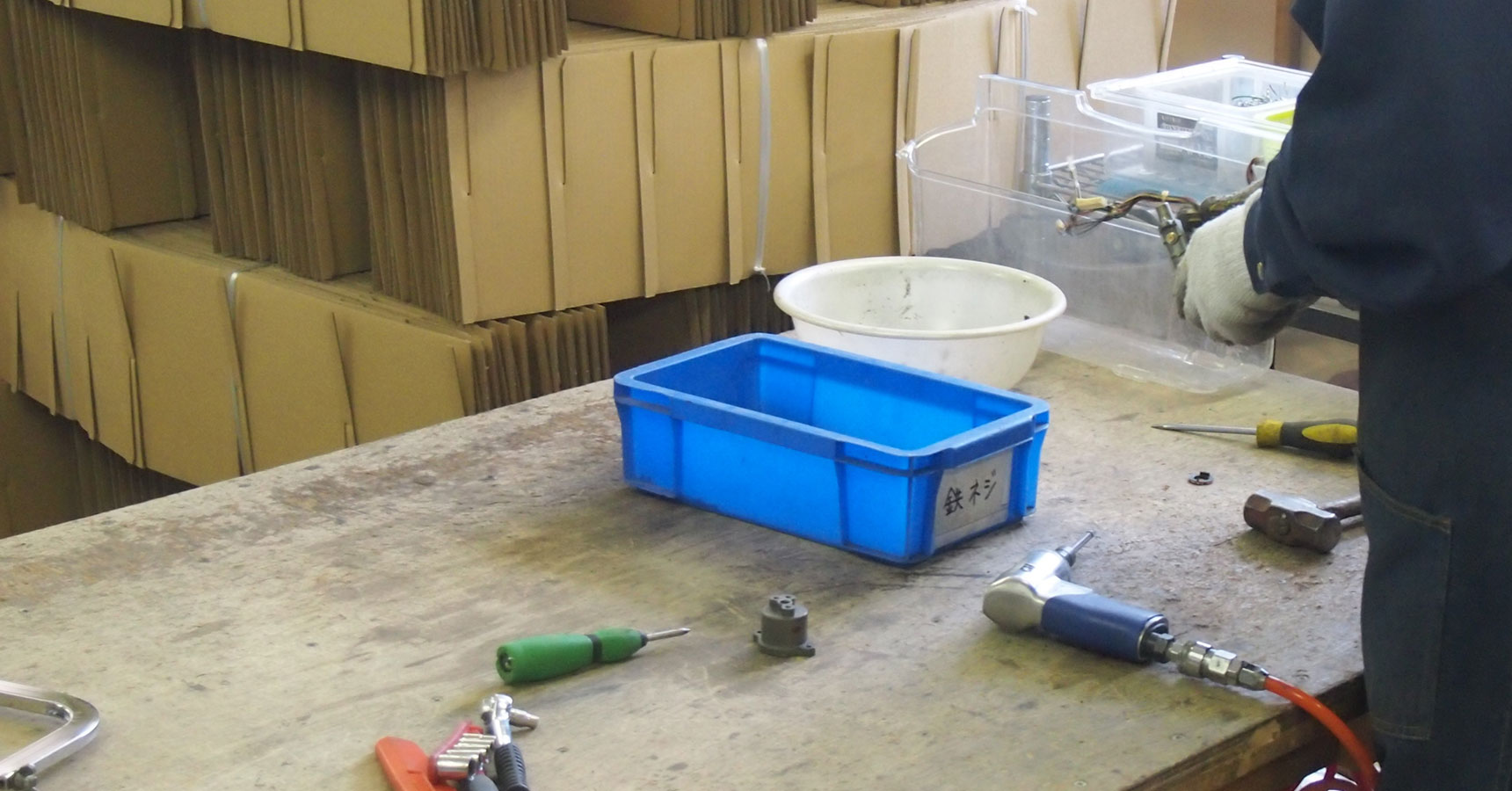
(注)さくらんぼは現在閉所しております。
お話:社会福祉法人 嶋福祉会 就労継続支援B型事業所 さくらんぼ
主任生活支援員(当時) 山崎雅博さん

(注)さくらんぼは現在閉所しております。
お話:社会福祉法人 嶋福祉会 就労継続支援B型事業所 さくらんぼ
主任生活支援員(当時) 山崎雅博さん
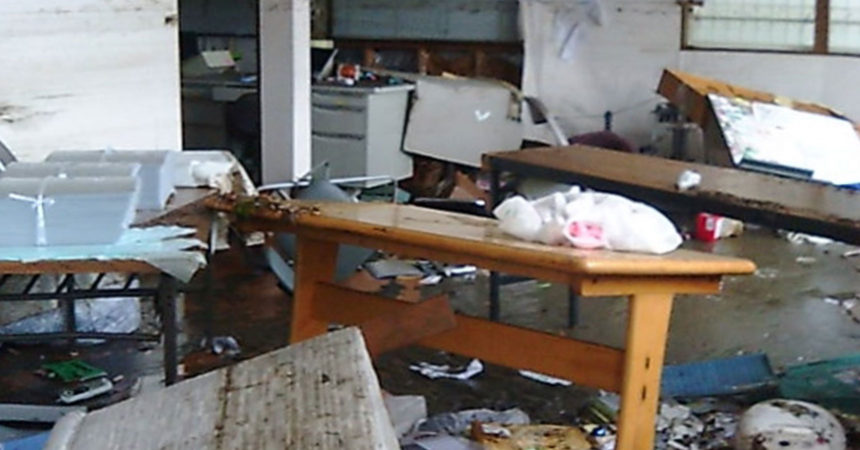
Sakuranbo was completely destroyed. One day it was just gone. The Ouka nursing home suffered large scale partial destruction, but it might as well have been gone too. Even though the building itself remained, the electrical system was flooded and shot, and several cars had crashed into the building so it was completely useless. But this was considered large scale partial destruction. So an unusable building doesn’t equal a completely destroyed building.
At the time, the Ouka nursing home facility had just opened in July 2010, and after it was damaged on 3/11 2011, it was demolished in June 2012 to meet the demolition deadline. Two disabled group homes were also damaged and torn down.
Sakuranbo, a vocational support center for the disabled, wasn’t far from the Ouka nursing home facility, so everyone from those facilities evacuated together.
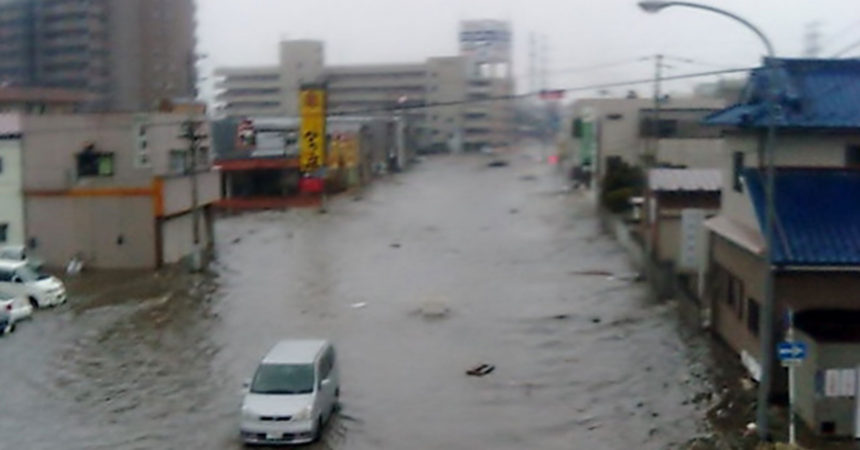
There was water up to the roofs below the pedestrian bridge we evacuated to, so we couldn’t get down even if we wanted to. Snow was also accumulating, and it was cold. The fire department arrived on the scene just before 5 p.m., but the area was so badly damaged that we weren’t actually rescued until 3:30 in the morning. We made it to our facility on the 13th. We could see the marks from the tsunami there, and it was a big mess inside.
The road in front of the office had also caved in, and it was like the water that came over the embankments had hit head-on. It was like the tsunami had come from both the ocean and the river at the same time.
We evacuated along the Sunaoshi riverbank. If we had evacuated to someplace farther from the river, I think we might have actually been swallowed up by the tsunami. Theory was useless in that disaster. If we had followed the directions to get away from the river, we might not exist in this world anymore. I really feel like that fork in the road determined our fate.
The saving grace of being rescued in the middle of the night was that our disabled trainees didn’t have to see the tragic scene. Some of them have really good memories.
We had a lot of intellectually disabled people in our facility, but not many of them lost their balance. They were just like, “Everything is gone,” or “It got washed away.”
They saved us when they said, “We want to do something. We have to try.”
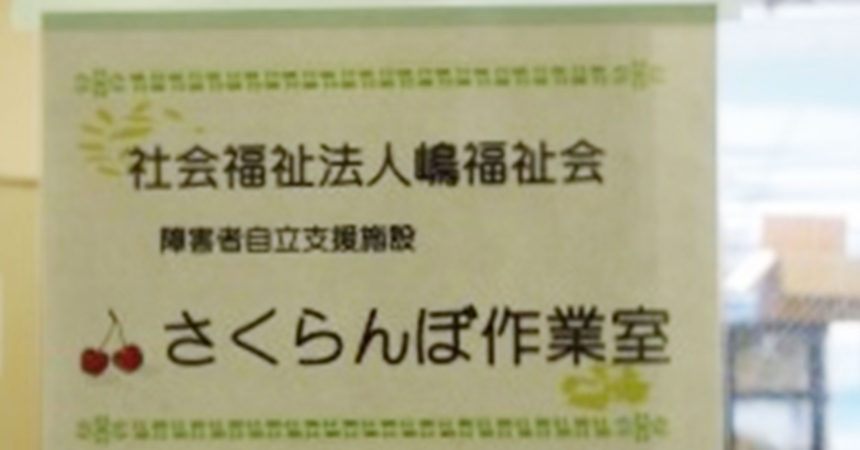
Disaster-vulnerable groups refer to people who need special help in a disaster. These people have difficulty evacuating on their own and need support. Of course, this means they also need special consideration after evacuating. Although they might have high priority on temporary housing lists, there isn’t even a place for them in shelters. For example, there is no consideration for those handicapped people who may have difficulties using general toilets, and they are not given first priority for spaces that accommodate their special needs. So disabled victims couldn’t stay, but had to find places other than shelters or live in cars. Then, if they weren’t living in shelters, they might not receive supplies and such. It became a never-ending cycle, and that was really exhausting at the time.
One person can only push one wheelchair, you know. It would be great if we had 10 staff members for 10 wheelchair users, but we were short-handed.
That’s the sort of thing people understand once you tell them, but I also want people who aren’t involved in social work to be aware of these things that were happening.
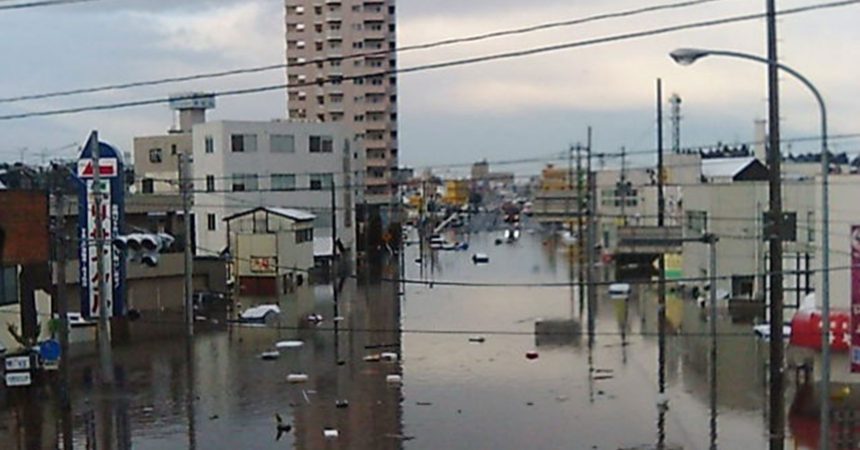
We didn’t have any trainees whose homes were damaged by the tsunami, so no one went into temporary housing either.
On the other hand, our building was the only place that got hit, so all of our trainees really wanted Sakuranbo to recover quickly. They didn’t withdraw, but were really energetic and happy when we resumed our activities.
But the building and staff were facing great difficulties. Some of our staff’s homes were damaged in the tsunami, or their cars were swept away and had crashed into their houses. Sakuranbo’s foundation was carried off around 2-3 meters, and the underground electrical lines and water pipes were all ruptured and destroyed. We didn’t know what to do.
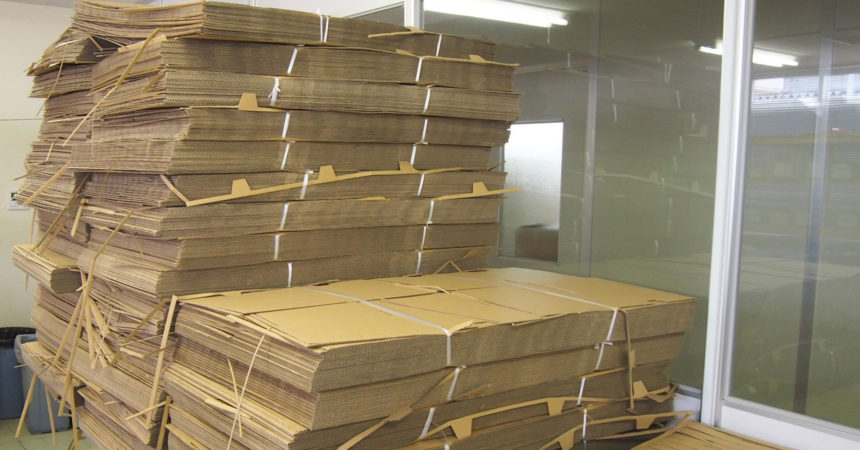
Before that disaster happened, we had been receiving work from companies in the Sendai Harbor area, but those companies were also damaged and we lost all our work. Our trainees were physically okay, but we had lost our workshop and work, meaning we had lost our livelihood.
We wanted to give our trainees work somehow, so we started having them clean parking lots and such. Then several people suggested we try crafting. So we started having the trainees make clips and key holders with treble clefs on them.
Our trainees used to do mainly cleaning work and never made crafts, but in any case our outsourcers had been damaged and couldn’t rebuild. It was a time of crisis, but it was really hard for the trainees having no income, and especially having nothing to do. So we decided to have them make things and try to sell even a few of them to give the trainees some pay.
Our trainees never got particularly depressed or anything. It did seem like they took pride in Sakuranbo. Although the building was gone, our trainees had the strong determination to keep up their spirits. Even though the workshop had physically disappeared from their lives, you know… I think they were still so proud of it and felt a strong sense of belonging. You might feel the same way if your company went bankrupt. They had a dream for Sakuranbo to be rebuilt in the same place one day.
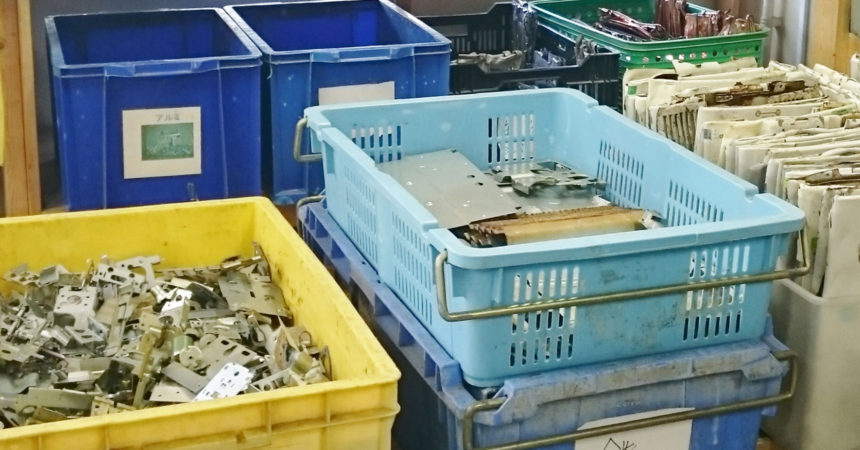
They used to complain about being busy when they had work, but once it was gone they said they were bored, haha.
I think they learned to be grateful for having jobs. I guess they were just reminded of the importance of having something to do. It changed the way they saw their work. They have started getting used to it and changing their tune again, but in a way, I think that’s happiness because it means they’re getting back to normal.
Some trainees who were absent a lot before the disaster also started coming every day once we started crafting. We ended up getting a lot of orders. We tried different things every day to make sure they wouldn’t get bored.
Since after the disaster until now, we’ve somehow been able to raise their wages. We still haven’t gotten back the work we had before the disaster. It’s really like we started over from square one. It’s thanks to the kind assistance of so many people around the country that we’ve been able to recover this much. It’s really put me in awe of the power of the support we have received.
Our trainees needed work clothes, gloves, etc. because everything had been washed away. We had to buy them. So I realized that it was important to recover and sustain our business, because a sound cash flow was actually quite essential for their lives.
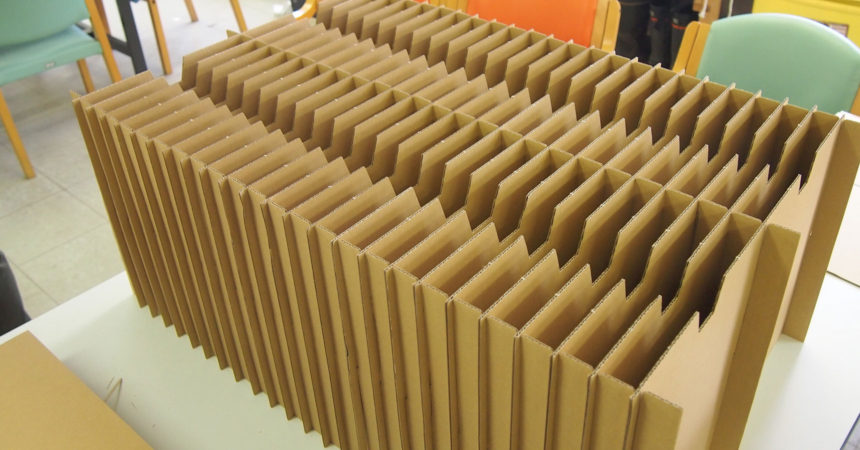
The month after the disaster, we were able to rent a space in the Tagajo Elderly Welfare Center and reopen our facility. It was supposed to be just until September, but we somehow got them to extend it until December. Then one day we happened to find a newspaper article about a suitable property and moved into the Recovery Park (in Sony’s Sendai Technology Center) in January the following year.
We had hoped to find a place and rebuild in 1-2 years, but we just couldn’t find a location or land to move to. We did consider our original location, but then we thought, what if the same thing happens again? We wanted a place we could feel safe, where no tsunami would come, and so it was rough going finding the right place.
However, we were being pressured to make a decision to rebuild or demolish Sakuranbo and Ouka by June. It was a big decision, but we ended up deciding not to rebuild in the same place.
We had lost everything, but we were strangely at peace because we were all together. We were able to find the will to keep going step by step. We staff do this job (social work) because we like it. We had to keep supporting our facilities. We had to be the voices of our trainees. It was like having a message to share brought us together.
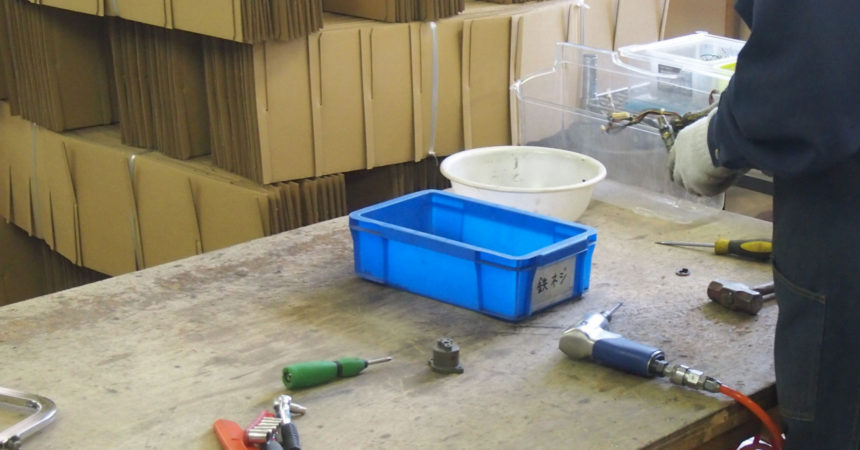
Looking around our prefecture, I think we have a mix of places that have made progress with their recovery and places that still have a long ways to go. I imagine most of the people living on the coast still feel like they’re not there yet. I mean, where should we set our recovery goals? People who come from outside the prefecture can’t even tell which areas were damaged and which weren’t. They don’t know if a place has recovered, or if it was always like that. Knowing a place makes you feel sympathy for it.
It’s been six years since that disaster, and sometimes I wonder if it’s over now and it’s all in the past. I think the most important and most difficult thing is deciding what to leave behind and pass on as our legacy.
“What do we need to remember about the disaster?”
“Is it the tragedy of it?”
“Helping each other?”
“And what should we pass on to the next generation?”
Looking back on the disaster, I do think we were able to find the strength in our daily gratitude to keep going despite an uncertain future. Until the day we can rebuild, we’ll still keep going.